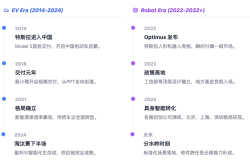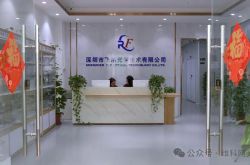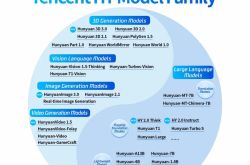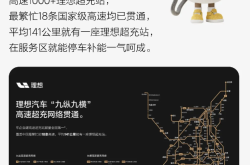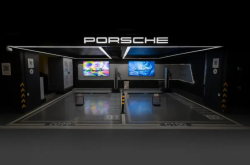Computex 2025 | Foxconn AI Factory: 80% AI, 20% Human Intelligence
![]() 05/26 2025
05/26 2025
![]() 713
713
Produced by ChiNeng Tech
At Computex 2025, Liu Yangwei, Chairman of Foxconn, offered a profound insight into the application of generative AI in manufacturing. He emphasized that while AI can handle 80% of tasks, it still relies on the remaining 20% of "human wisdom" to complete the industrial loop.
By tracking Foxconn's advancements, we can broadly gauge the practical limits of Physical AI in empowering manufacturing and the path Foxconn is taking to transform into a core AI data center enterprise. This involves establishing AI factories that integrate generative AI, robots, and digital twins, fostering deep partnerships with NVIDIA and TSMC, and evolving from a "manufacturing factory" to an "intelligent eco-factory." Centered in Taiwan, this transformation is poised to radiate a future blueprint for global manufacturing, urban governance, and semiconductor supply chains.
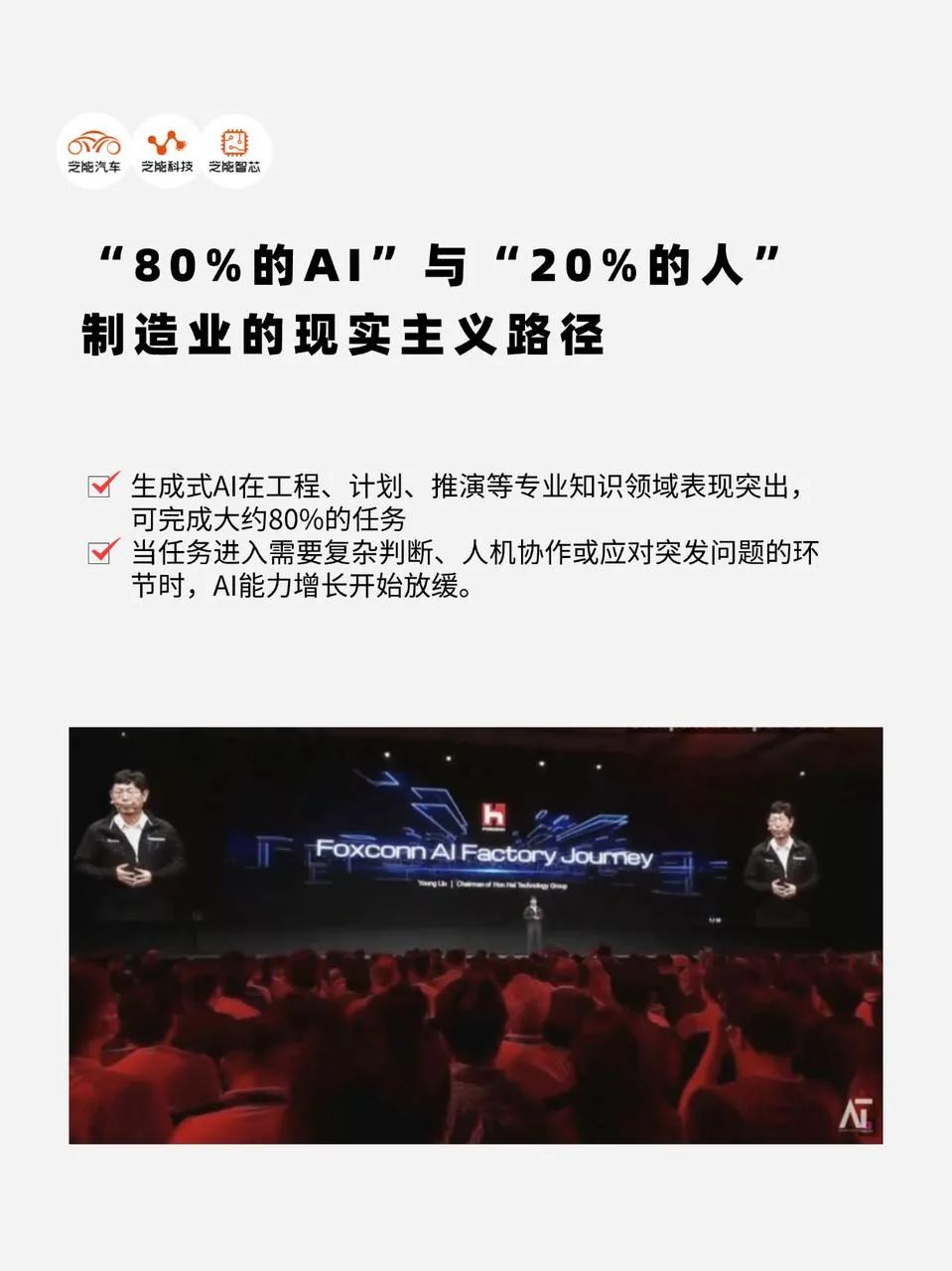
01
'80% AI' and '20% Human': A Realistic Manufacturing Pathway
Liu Yangwei's '80/20' assertion introduced a note of rationality into the ongoing debate about AI's potential to fully replace humans. Foxconn's internal simulations reveal that generative AI excels in areas requiring professional knowledge such as engineering, planning, and deduction, capable of handling approximately 80% of tasks. However, when tasks involve complex judgment, human-machine collaboration, or addressing unforeseen issues, AI's ability growth decelerates.
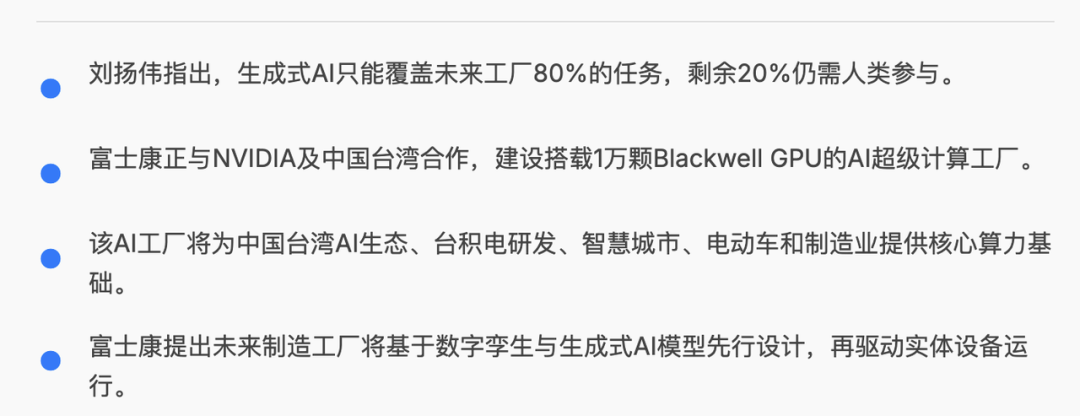
This distinction is crucial. Today's generative AI demonstrates remarkable efficiency in tasks like drawing design, process optimization, and code generation, particularly showcasing its computing power in digital twin models and manufacturing process simulations. Yet, in production stages requiring 'touch and judgment,' such as equipment anomaly diagnosis, non-standard product handling, or safety strategy adjustments, the expertise of skilled workers and engineers remains indispensable.
This collaborative model, where AI serves as the main force and humans as the critical component, represents a viable path for the practical implementation of AI in manufacturing and the philosophical foundation of Foxconn's AI factory concept. It signals the maturation stage of integrating intelligent systems with human experience.
True industrial intelligence entails allowing AI to manage heavy, repetitive, and predictable tasks while humans focus on high-value decision-making that necessitates judgment. This constitutes Foxconn's proposed new model of 'AI-assisted humans' in future manufacturing.
02
AI Factories Beyond Traditional Boundaries: Foxconn's Vision for the Future
Foxconn's vision for AI factories transcends automated production lines or productivity tools; it envisions an industrial system and ecological hub centered on generative AI, digital twins, and robots.
The AI supercomputing factory developed in collaboration with NVIDIA, TSMC, and Taiwan's Science and Technology Council serves as a 'national-level innovation infrastructure' powered by advanced computing capabilities.
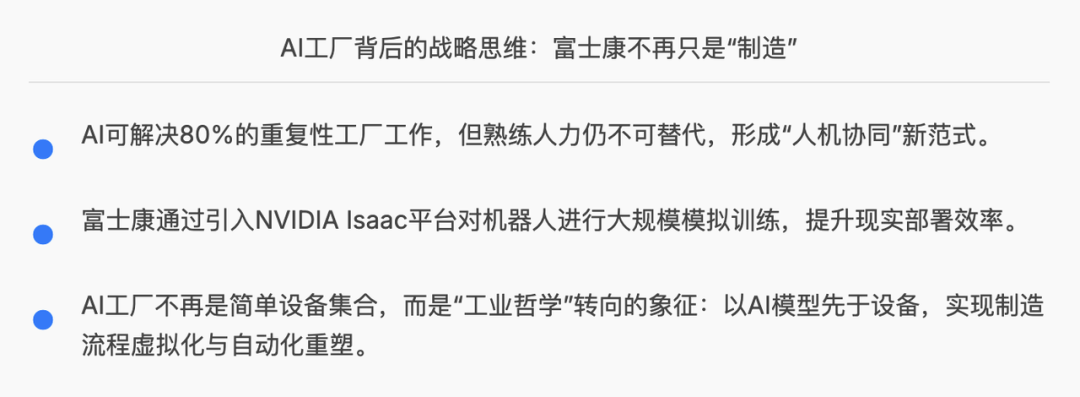
Equipped with 10,000 NVIDIA Blackwell GPUs, this supercomputing system is not merely a tool to enhance Foxconn's manufacturing operations but also a universal computing platform supporting TSMC's R&D, Taiwan's AI industry development, and smart city experiments.
◎ TSMC refers to it as a 'research and development platform with performance leaps of several orders of magnitude';
◎ The Science and Technology Council positions it as the core engine for Taiwan's ambition to build an AI Island;
◎ For Foxconn, it represents the driving force behind the upgradation of its three pillars: smart cities, electric vehicles, and manufacturing.
Within this AI factory, AI servers, power systems, liquid cooling systems, packaging processes, cloud platforms, and even care robots like 'Nurabot' form part of its comprehensive 'super factory ecosystem.' This ecosystem not only serves Foxconn but also startups, research institutions, and global technology leaders through cloud channels such as NVIDIA DGX Cloud Lepton.
This transformation positions Foxconn as an operator of an 'AI service platform,' expanding its customer base beyond Apple and Microsoft to encompass all innovators in the global AI era.
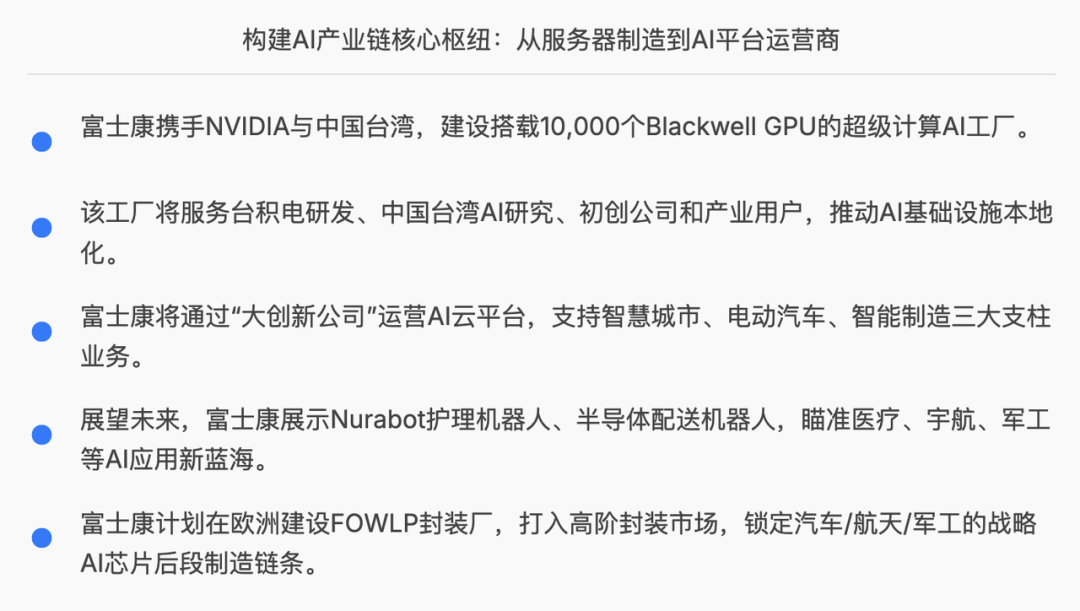
Foxconn's publicly unveiled strategy of 'from chips to cities' further validates this logic:
◎ By partnering with French companies Thales and Radial, it is entering the advanced packaging field of FOWLP, targeting high-end semiconductor markets such as European aviation, military, and automotive;
◎ Through care robots, it addresses labor shortages stemming from Taiwan's aging population;
◎ Through AI city brains and simulation factories, it preemptively manages changes in urban operations and product production.
These strategies extend and evolve the traditional 'factory' concept, transcending the boundaries of physical manufacturing.
This industrial reshaping centered on AI factories has led Taiwan's Science and Technology Council to articulate a clear vision for building an 'AI Island.' The goal is not merely to compete in the AI race but to establish a self-defining, self-iterating, and self-updating technological sovereignty system by controlling computing resources, AI ecosystems, data resources, and the vertical integration of software and hardware systems. This transforms 'factories' into strategic carriers and 'engines' driving a country's digital future.
Summary
Foxconn's ongoing pursuit of AI factories embodies this concept: leveraging NVIDIA chips to create 'thinking' machines, utilizing TSMC's chip manufacturing capabilities to support mass AI hardware production, fostering a local innovation ecosystem in Taiwan, and combining Foxconn's expertise in manufacturing, servers, packaging, and automation to transform factories into replicable and scalable smart city units and technological strategic nodes.

